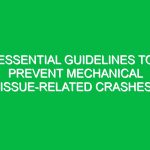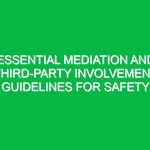Introduction to Safety Compliance Audits
Safety compliance audits are systematic evaluations of an organization’s adherence to Safety Regulations and Standards. These audits serve as a crucial tool for ensuring that Workplace Safety practices are not only implemented but also effective in preventing accidents and injuries. The importance of safety compliance audits in Health, Safety, and Environment (HSE) cannot be overstated; they help organizations identify gaps in their safety protocols and provide a framework for continuous improvement. Have you considered how your organization measures up against safety standards?
Non-compliance with safety regulations poses significant risks, not only to employees but also to the organization itself. Failing to comply can lead to severe legal ramifications, financial penalties, and a tarnished reputation. Moreover, it can jeopardize employee safety and well-being, which should always be the top priority in any workplace. Understanding these risks is essential for fostering a culture of safety within your organization.
Legal Framework and Standards
Key Regulations Governing Safety Compliance Audits
Several key regulations govern safety compliance audits, each playing a vital role in maintaining Workplace Safety. The Occupational Safety and Health Administration (OSHA) regulations set forth requirements for Workplace Safety across various industries. Compliance with osha regulations not only protects employees but also shields organizations from potential fines and lawsuits.
In addition to OSHA, the International Organization for Standardization (ISO) provides globally recognized standards that organizations can follow to ensure quality management and safety practices. Industry-specific safety standards further enhance the relevance of these regulations by tailoring them to specific operational contexts. How familiar are you with the regulations that apply to your industry?
Consequences of Non-Compliance
The consequences of non-compliance with safety standards can be dire for any organization. Legally, organizations may face hefty fines or even lawsuits if they fail to adhere to established regulations. Financial implications extend beyond penalties; non-compliance can lead to increased insurance premiums and loss of business opportunities.
Moreover, the impact on employee safety and well-being is profound. A workplace that neglects compliance may experience higher accident rates, leading to injury or even fatality among employees. This not only affects the victims but also creates a culture of fear and distrust within the organization. Are you aware of the potential repercussions your organization could face due to non-compliance?
Preparing for a Safety Compliance Audit
Establishing an Audit Team
The first step in preparing for a safety compliance audit is establishing an audit team composed of skilled individuals committed to improving Workplace Safety. Each team member should have clearly defined roles and responsibilities to ensure that all aspects of the audit process are covered effectively. For instance, some members may focus on document reviews while others conduct site inspections.
Training requirements for audit personnel are equally important; auditors should be well-versed in applicable regulations, auditing techniques, and organizational policies. By investing in Training, organizations empower their teams to identify issues accurately and suggest effective corrective actions. How well-prepared is your audit team?
Documenting Policies and Procedures
A comprehensive documentation process is crucial for successful audits. Having clear policies and procedures helps ensure that everyone understands their roles regarding Workplace Safety. Essential documents may include safety manuals, training records, incident reports, and Maintenance logs. These records serve as valuable references during the audit process.
The importance of comprehensive documentation cannot be overstated; it not only aids in compliance but also fosters transparency within the organization. Regularly updating these documents is vital as it reflects ongoing commitment to improvement and compliance with evolving regulations. Are your documentation practices up-to-date?
Conducting Pre-Audit Assessments
Before an official audit takes place, conducting pre-audit assessments can provide invaluable insights into areas needing improvement. Utilizing self-assessment tools and checklists allows organizations to identify potential areas of concern proactively. This step helps in addressing issues before they escalate during the actual audit.
Identifying potential areas of concern early on can significantly enhance the effectiveness of the compliance audit process. By rectifying these issues beforehand, organizations demonstrate their commitment to maintaining high safety standards. What steps does your organization take to prepare for an upcoming audit?
Conducting the Safety Compliance Audit
Audit Methodologies
When conducting a safety compliance audit, choosing the right methodology is essential for obtaining reliable results. There are generally two types of audits: internal and external. Internal audits are conducted by an organization’s staff while external audits involve third-party evaluators who provide an objective perspective on compliance.
Effective auditing techniques include interviews with employees, direct observations of work processes, and thorough record reviews. Each technique serves a distinct purpose; interviews allow auditors to gauge employee understanding of policies while observations reveal real-time adherence to safety practices. How does your organization approach its auditing methodologies?
Key Areas of Focus during Audits
During audits, certain key areas warrant special attention due to their impact on overall workplace safety. Workplace Hazards must be assessed through rigorous risk evaluations to identify potential dangers that could harm employees or disrupt operations. This includes analyzing equipment usage, chemical handling practices, and ergonomic considerations.
Additionally, evaluating employee training and competency is critical; ensuring that all staff members are adequately trained equips them with the knowledge necessary to perform safely and effectively. Emergency preparedness plans also need scrutiny; organizations must confirm that they have actionable response strategies in place should incidents occur unexpectedly. Are these areas receiving adequate attention during your audits?
Anayzing Audit Findings
Reporting Results
The final phase of a compliance audit involves reporting results clearly and comprehensively. A structured audit report should include an executive summary, detailed findings on each area evaluated, identified non-compliance issues, and recommendations for corrective actions. Effective communication of these findings ensures all stakeholders understand their implications.
When communicating findings to stakeholders—be it management or employees—transparency is key. Engaging discussions about results foster a culture of openness where everyone feels responsible for contributing towards improvements in workplace safety practices. How do you plan to communicate your audit findings?
Identifying Non-Compliance Issues
Identifying non-compliance issues during audits helps organizations pinpoint weaknesses within their systems effectively. Common examples might include inadequate training records or lack of Personal Protective Equipment (PPE) usage among employees across various industries. Recognizing these shortcomings allows companies to prioritize corrective actions accordingly.
Tools such as risk matrices can aid in prioritizing which non-compliance issues require immediate attention based on their severity or potential impact on health and safety outcomes. By addressing high-risk concerns first, organizations demonstrate their commitment to improving overall workplace conditions effectively. What common non-compliance issues have you encountered in past audits?
Implementing Corrective Actions and Improvements
Developing an Action Plan
The development of an action plan post-audit is crucial for ensuring that identified issues are addressed promptly and effectively. Setting measurable goals for compliance improvement provides clear targets that teams can strive toward while assigning responsibilities ensures accountability throughout implementation processes.
A well-defined timeline for corrective measures facilitates timely follow-ups while keeping progress on track towards achieving desired outcomes outlined in previous reports or recommendations made by auditors themselves—this creates momentum towards sustained improvements over time! How do you plan on tracking progress towards corrective actions?
Monitoring Progress Post-Audit
Monitoring progress after implementing corrective actions allows organizations to assess effectiveness continually over time beyond mere completion rates alone! Tracking implementation helps identify any lingering challenges faced during execution phases while providing insight into whether further adjustments might be necessary moving forward.
Additionally, embracing continuous improvement strategies fosters ongoing commitment towards enhancing overall compliance efforts across all levels within businesses themselves—this proactive approach ensures adaptability amidst ever-changing regulatory landscapes! What strategies does your organization use for continuous monitoring post-audit?
Best Practices for Future Safety Compliance Audits
Create a Culture of Safety
Cultivating a culture of safety starts with leadership commitment at all levels within an organization; when leaders prioritize HSE initiatives visibly through actions rather than just words—it sets powerful examples throughout teams below them! This commitment encourages employees’ involvement too—creating opportunities where they can contribute ideas towards improving overall practices surrounding health & environmental considerations regularly.
An engaged workforce feels empowered knowing their contributions matter significantly—this leads naturally into heightened awareness around best-practice approaches as everyone collaborates towards shared goals! How are leaders in your organization promoting a culture of safety?
Regular Training and Education
The importance of ongoing training programs cannot be underestimated; regular educational sessions keep employees informed about new regulations while reinforcing existing procedures relevantly! Utilizing technology enhances delivery methods (e.g., e-learning platforms) making participation more accessible & engaging than traditional means alone.
This investment pays dividends long-term as knowledgeable workers tend not only comply better but also contribute positively towards fostering safe environments overall! Have you explored innovative training delivery options within your workforce yet?
Scheduling Periodic Audits
The Benefits gained from routine compliance checks are substantial; scheduling periodic audits allows organizations always remain vigilant & proactive rather than reactive concerning regulatory requirements! Integrating these evaluations seamlessly into existing management systems promotes Sustainability ensuring consistent adherence without overwhelming workloads unnecessarily!
This regularity builds familiarity amongst staff thereby fostering confidence when confronted by auditors themselves down-the-line too—establishing trust helps create healthier working relationships between parties involved ultimately promoting greater success stories around HSE initiatives altogether! How frequently does your organization conduct audits currently?
Case Studies and Real-World Applications
Successful Safety Compliance Audit Implementation
A noteworthy example comes from the manufacturing sector where one company revamped its entire approach following insights gained from previous audits resulting in dramatic reductions regarding workplace incidents! By prioritizing engagement through employee feedback alongside targeted training initiatives—they achieved remarkable improvements over short periods proving tangible benefits derived from consistent application methodologies!
An illustration from healthcare further emphasizes this notion; hospitals adopting structured approaches led them successfully navigating challenges presented during inspections demonstrating preparedness & adaptability throughout various phases leading toward accreditation upgrades achieved collectively by stakeholders involved across departments working together harmoniously ultimately enhancing patient care outcomes noticeably too!
Lessons Learned from Failed Audits
An analysis into high-profile non-compliance cases reveals stark lessons learned about accountability gaps present before those incidents occurred—it emphasizes importance surrounding thoroughness during preparation phases particularly concerning documentation accuracy needed consistently moving forward thereafter!
The key takeaway here revolves around recognizing how oversight slips occur gradually without proper vigilance maintained consistently—the implications extend beyond mere financial penalties impacting stakeholder confidence negatively affecting brand reputations long-term thereby necessitating stronger commitments towards improved auditing practices going forward continuously!
Conclusion
The importance of safety compliance audits cannot be overstated—they serve as essential tools helping organizations uphold high standards protecting both employees & businesses alike! Prioritizing HSE practices across operations fosters safer environments benefiting everyone involved significantly thereby enhancing overall productivity levels too!
This calls upon all leaders/teams involved actively evaluating current efforts regularly seeking avenues enhancing effectiveness surrounding their respective strategies continually striving towards excellence together collaboratively moving forward positively impacting future generations alike!
Please take this opportunity today reevaluating current strategies consider ways improve upon existing frameworks promoting better results collectively—commit yourselves ensuring adherence remains paramount throughout every aspect daily operations always keeping people first above all else!


